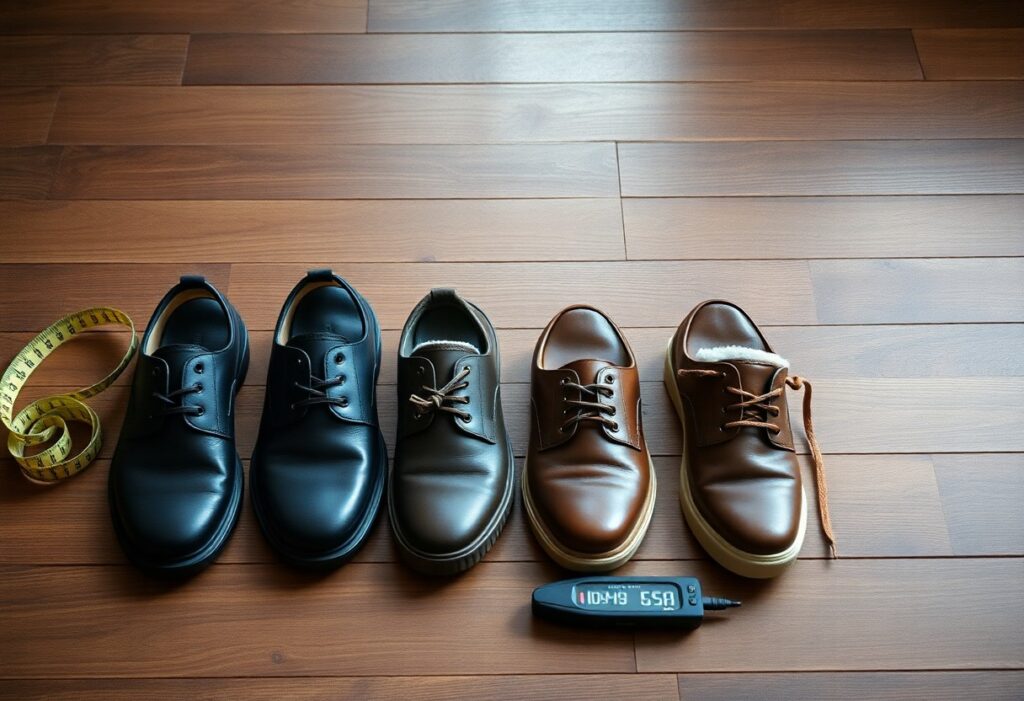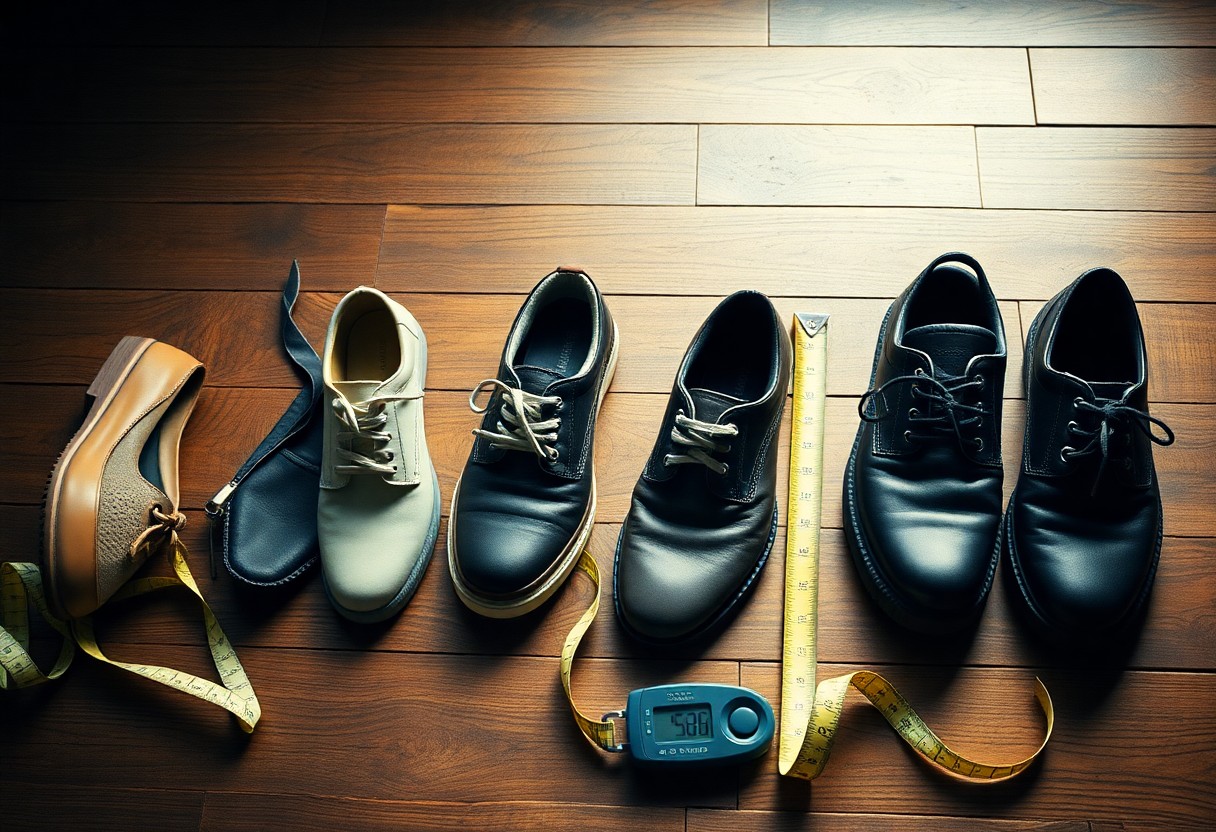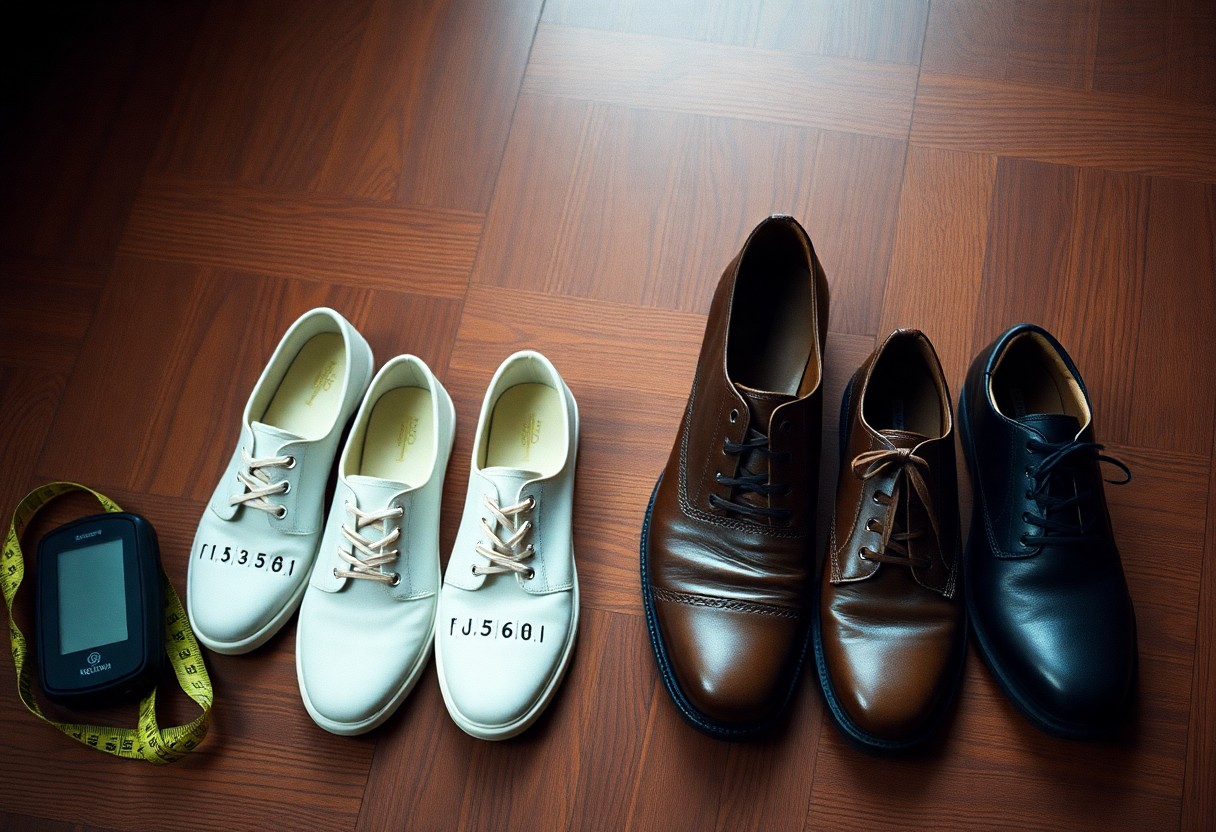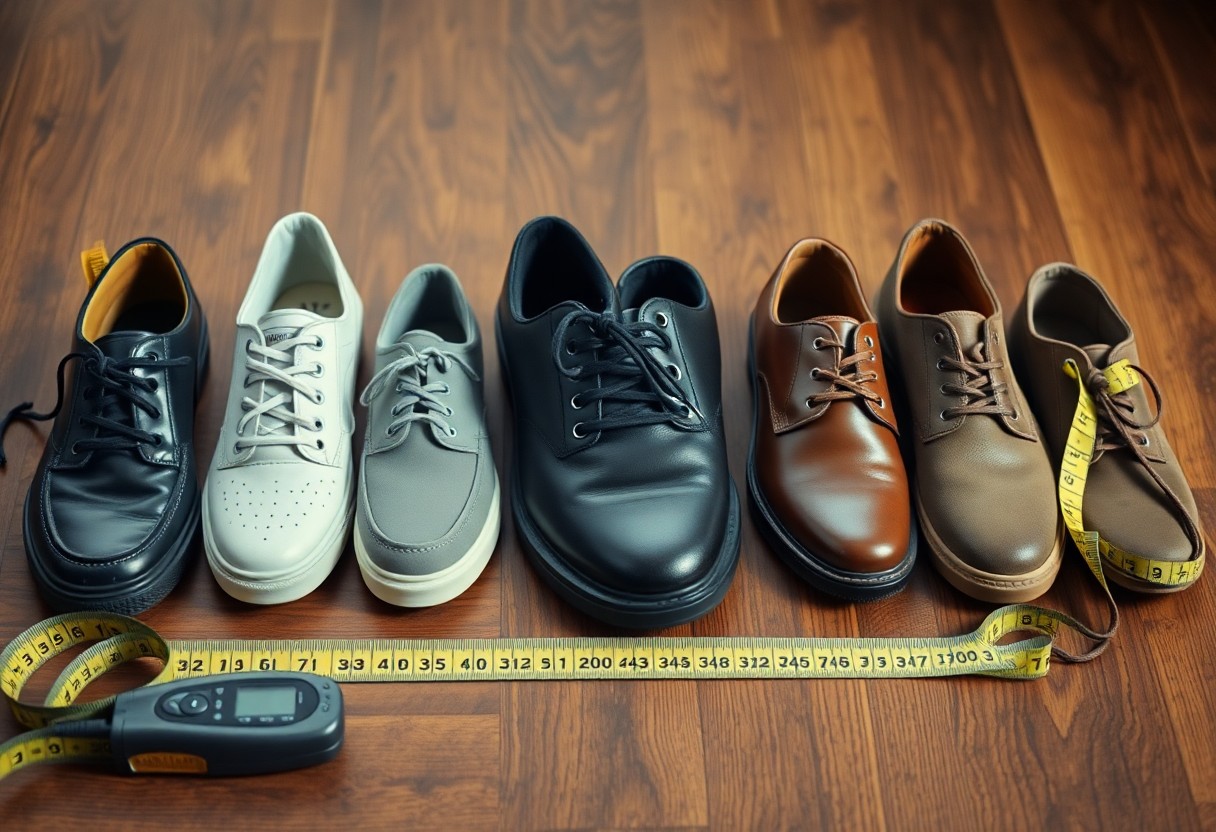
Understanding the importance of selecting shoes with the right width is essential for maintaining your overall foot health and comfort. Wearing shoes that fit properly can significantly reduce foot pain and prevent numerous health complications. When searching for new footwear, it’s imperative to consider both the length and width to ensure a perfect fit. Choosing shoes with the correct width not only enhances your balance and promotes better blood circulation but also reduces the likelihood of blisters and other foot-related issues. To determine your ideal shoe width, measure the widest part of your foot and refer to standardized width charts. Many shoppers wrongly prioritize length alone, neglecting the fact that adequate width is equally crucial for daily comfort and overall foot well-being.
Learn How to Measure Your Feet Accurately for the Perfect Shoe Fit
The best method to find your shoe width is to measure your feet later in the day when they are likely to be slightly swollen. Your foot width can fluctuate by as much as half an inch throughout the day, making evening measurements the most reliable for achieving a comfortable fit. To accurately measure, stand on a sheet of paper and trace around your foot, ensuring you capture the most precise outline. This simple yet effective technique can help you find shoes that not only fit well but also provide the comfort and support your feet genuinely need for everyday activities.
Smart Techniques for Measuring Your Foot Width Accurately
In addition to using a standard ruler, consider employing a Brannock Device, a specialized tool commonly found in shoe stores that measures foot sizes with precision. This device allows you to measure the widest part of your foot, typically located across the ball area. For optimal results, measure both feet while standing, as it’s common for one foot to be slightly larger than the other. This method ensures you select shoes that accommodate the larger foot, preventing discomfort during wear and promoting better overall foot health.
Key Mistakes to Avoid When Selecting Shoe Width
One of the most common pitfalls in choosing shoe width is ignoring the significance of width measurements. Many individuals concentrate solely on length, which can lead to discomfort and various foot issues. Additional frequent errors include measuring feet while seated and mistakenly assuming your foot width remains unchanged throughout your life. Understanding that wearing shoes that are too narrow can lead to serious foot complications such as bunions, corns, and hammertoes is crucial. Foot size can change due to factors like weight gain or loss, pregnancy, or aging, making it wise to measure your feet at least once a year. Choosing the right width can effectively help in avoiding blisters, calluses, and persistent foot pain.

Understanding Shoe Width Systems and Standards for Optimal Fit
Familiarizing yourself with the various shoe width systems is crucial for ensuring overall comfort and foot wellness. Different brands and countries use distinct measurement standards, and understanding these systems can help you select shoes that fit well and prevent foot complications. By grasping how width is categorized, you’ll be empowered to make well-informed decisions when it comes to choosing footwear that meets your specific requirements.
Exploring Letter-Based Width Scales for a Superior Shoe Fit
When shopping for shoes, you’ll typically encounter widths labeled from AA to EE. For women, a standard medium width is identified as B, while for men, it is D. Narrow widths fall under the AA to B category, whereas wide widths extend from D to EE. This letter-based system is designed to assist you in pinpointing the right fit according to your foot shape, ensuring that your footwear is not only comfortable but also provides the necessary support for your daily activities.
Understanding International Width Measurement Standards and Their Impact
When shopping internationally, you may encounter various measurement systems. For example, European sizes are defined in millimeters, while UK sizes follow their unique width standards. Your US shoe size may differ from international sizes by one to two width sizes. Therefore, it’s vital to always check the brand’s size chart when purchasing shoes from overseas. Japanese shoes tend to be narrower, while European brands often feature a wider toe box. To ensure the best fit, measuring your feet in millimeters provides the most accurate reference for international purchases.

Comprehending How Shoe Construction Affects Fit and Comfort
To make informed footwear choices, it’s essential to understand the construction of shoes. The way a shoe is built significantly influences how it fits and feels. Your overall comfort is largely dictated by how the upper portion of the shoe connects to the sole and the flexibility of materials used around the widest part of your foot. By selecting shoes with thoughtful construction, you can greatly enhance your comfort and support throughout your daily activities, ensuring your feet remain happy and healthy.
The Benefits of Natural Materials in Footwear Choices
Shoes made from genuine leather provide exceptional breathability and adaptability. Leather naturally stretches and molds to your foot shape over time, resulting in a customized fit that enhances comfort. Research indicates that leather shoes can expand by up to 30% of their original width, making them an excellent choice for individuals with varying foot widths looking for comfort and flexibility.
Durability and Consistency of Synthetic Shoe Materials
Synthetic materials available in the market offer consistent width measurements and impressive durability. These modern materials not only protect your feet but also provide water resistance and enhanced breathability. Many synthetic shoes now incorporate mesh panels that promote airflow and flexibility. Furthermore, advancements in synthetic materials have led to the integration of comfort features such as memory foam and gel inserts. As a result, shoes can now combine stable width measurements with targeted cushioning, ensuring excellent support during wear. Recent studies have shown that synthetic materials can maintain their shape up to 40% longer than traditional materials, ensuring your shoes retain their proper width over time.

Identifying Signs of Proper Shoe Width for Enhanced Comfort
Unlike length, the correct shoe width becomes evident through how your feet feel and function while wearing them. Your shoes should allow your toes to spread freely as you walk, with approximately half an inch of space at the widest part of the foot. Research indicates that 70% of individuals wear shoes that are incorrectly fitted in terms of width, leading to various foot problems. Recognizing the signs of proper width can empower you to make better footwear choices that support your foot health.
Key Indicators of Comfort from Correct Shoe Width
Here are essential indicators that your shoes fit correctly in terms of width: your toes should be able to wiggle comfortably, the ball of your foot should align with the shoe’s widest part, and you should not feel any pinching on the sides. A well-fitting shoe allows your feet to expand naturally throughout the day, as feet can swell by up to 8% by the end of the day.
Warning Signs of Incorrect Shoe Width
During regular wear, it’s crucial to pay attention to warning signs such as numbness or tingling in your toes, blisters on the sides of your feet, and pressure marks on your skin after removing your shoes. These symptoms indicate that your shoes may be too narrow or excessively wide for your feet. Proper width is essential for maintaining foot health, as research shows that poorly fitting shoes can lead to long-term foot issues. You should not experience any pressure points while standing or walking; if you feel pain, redness, or if your foot spills over the edges of the shoe, it’s time to consider a different width for your footwear.
Understanding Width Variations Across Different Shoe Brands
Many shoe brands offer a range of width options, from AA (super narrow) to 4E (extra wide). It’s important to note that foot width can vary throughout the day, and studies show that up to 70% of individuals may have different widths between their left and right foot. Recognizing these variations is vital for selecting shoes that accommodate your unique foot shape and help prevent discomfort and potential foot complications.
The Impact of Brand Differences on Shoe Width Measurements
When comparing various brands, you may notice significant differences in width measurements. A medium width in one brand could feel narrow in another. European brands typically run narrower than American brands, while athletic footwear companies often provide the widest range of options. It’s always advisable to try on shoes before purchasing, as sizes can vary considerably across different manufacturers, ensuring you find the best fit for your feet.
How Shoe Style Affects Width Fitting
The style of the shoe significantly influences how width fits your foot. Athletic shoes generally provide more flexibility in width compared to dress shoes, while sandals are designed to accommodate a more natural width. Your foot width requirements may change based on the shoe’s intended purpose and the activities you plan to engage in. Further analysis suggests that specific styles demand particular width considerations. For example, high heels require a secure fit to prevent slipping, while work boots may need additional width to comfortably fit thicker socks. Running shoes should offer approximately half an inch of space between your longest toe and the shoe’s tip to ensure optimal comfort and performance.
Identifying Special Width Needs for Unique Foot Characteristics
While standard sizing options are available, some individuals may require specific width accommodations. If you have conditions such as bunions, flat feet, or experience swelling, wider shoes may be necessary. Moreover, foot width can change throughout the day, with studies suggesting a potential 4% increase in foot volume by evening. Being aware of these variations is crucial for selecting shoes that remain comfortable throughout your daily activities.
Foot Conditions That Require Special Width Accommodations
Special width needs often arise from medical conditions. For individuals with diabetes, arthritis, or edema, wearing shoes with extra width allowance for proper circulation is essential. Healthcare professionals may recommend specific width measurements to prevent complications associated with these conditions. Studies indicate that 75% of individuals with foot conditions benefit from specialized width fittings, highlighting the importance of appropriate footwear in maintaining foot health.
Activity-Specific Width Requirements for Optimal Performance
An active lifestyle demands specific shoe widths for various activities. For instance, your running shoes might require more width than your everyday footwear, while hiking boots need ample space to accommodate thicker socks. Athletes often benefit from shoes that are half a size to a full size wider for high-impact activities, allowing for necessary foot expansion during exertion. In activity-specific fitting, consider your foot’s natural movement patterns. During running, your feet can spread up to half a size wider. For sports that involve lateral movements, such as tennis or basketball, sufficient width is crucial to avoid foot strain and potential injuries. Therefore, your footwear choices should align with your activity level and unique foot characteristics.
Find Your Ideal Shoe Width for Lasting Comfort
The key to discovering your perfect shoe width lies in employing proper measurement techniques and understanding available width options. By measuring your feet at their widest point, identifying your width category (which ranges from A to E), and selecting shoes that correspond to your measurements, you can ensure lasting comfort. Your shoes should fit snugly without causing pinching or sliding, allowing your toes the freedom to move naturally. By choosing the right width and materials that suit your feet, you can enjoy comfortable, well-fitting footwear that supports your daily endeavors and keeps your feet healthy.
Frequently Asked Questions About Shoe Width Answered
Q: What is the best way to measure my foot width at home?
A: To measure your foot width accurately at home, place your foot on a blank sheet of paper and trace its outline. Measure the widest part, generally located at the ball of your foot, with a ruler. It’s advisable to take measurements in the afternoon when your feet are at their largest. Don’t forget to measure both feet, as one may be wider than the other. Use these measurements to compare with shoe width charts provided by manufacturers to find the best fit.
Q: What are the standard width measurements for shoes?
A: Shoe widths generally utilize letter codes ranging from A to E. For women, the standard medium width is B, while for men, it’s D. Narrow widths are denoted by A and AA, while C and D indicate medium-wide for women. E and EE represent wide widths. Keep in mind that each brand may exhibit slight variations in their width measurements, so it’s wise to consult their specific size charts before making a purchase.
Q: How can I tell if my current shoes have the wrong width?
A: Watch for indicators such as red marks on the sides of your feet, numbness in your toes, blisters on your heels or sides, and shoes that slip off while walking. Your toes should have sufficient space to wiggle freely, and the ball of your foot should fit comfortably at the shoe’s widest part. If you experience pressure on the sides, it may be time to consider a wider shoe. Conversely, if your foot moves side-to-side, you might need a narrower width.
The Article How to choose the right shoe width tips for a comfortable fit appeared first on My Shoes Finder
The Article Choosing the Right Shoe Width for Ultimate Comfort Was Found On https://limitsofstrategy.com
The Article Shoe Width for Ultimate Comfort: How to Choose Wisely First Appeared ON
: https://ad4sc.com













Rhea Mwangi
Your insights on the significance of shoe width resonate deeply with my own experiences. I vividly recall a time when I overlooked the importance of finding the right width in my footwear. I had been lured in by a pair of trendy shoes that looked fantastic but turned out to be painfully narrow. After just a few days of wear, I found myself nursing blisters and discomfort that persisted even when I opted for what I thought would be better shoes. It was a humbling reminder that aesthetics should never supersede comfort and health.